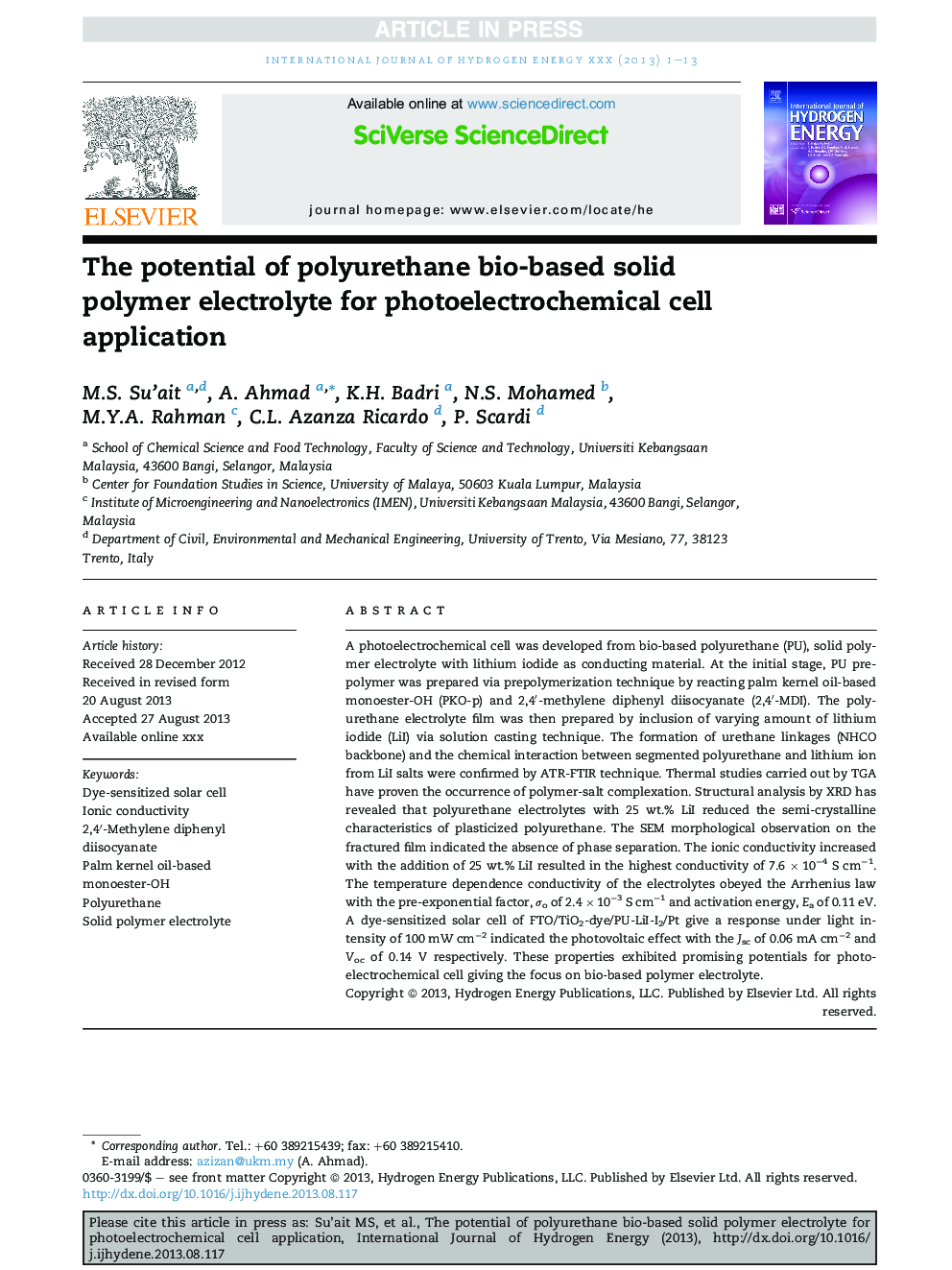| Article ID | Journal | Published Year | Pages | File Type |
|---|---|---|---|---|
| 7720769 | International Journal of Hydrogen Energy | 2014 | 13 Pages |
Abstract
A photoelectrochemical cell was developed from bio-based polyurethane (PU), solid polymer electrolyte with lithium iodide as conducting material. At the initial stage, PU prepolymer was prepared via prepolymerization technique by reacting palm kernel oil-based monoester-OH (PKO-p) and 2,4â²-methylene diphenyl diisocyanate (2,4â²-MDI). The polyurethane electrolyte film was then prepared by inclusion of varying amount of lithium iodide (LiI) via solution casting technique. The formation of urethane linkages (NHCO backbone) and the chemical interaction between segmented polyurethane and lithium ion from LiI salts were confirmed by ATR-FTIR technique. Thermal studies carried out by TGA have proven the occurrence of polymer-salt complexation. Structural analysis by XRD has revealed that polyurethane electrolytes with 25Â wt.% LiI reduced the semi-crystalline characteristics of plasticized polyurethane. The SEM morphological observation on the fractured film indicated the absence of phase separation. The ionic conductivity increased with the addition of 25Â wt.% LiI resulted in the highest conductivity of 7.6Â ÃÂ 10â4Â SÂ cmâ1. The temperature dependence conductivity of the electrolytes obeyed the Arrhenius law with the pre-exponential factor, Ïo of 2.4Â ÃÂ 10â3Â SÂ cmâ1 and activation energy, Ea of 0.11Â eV. A dye-sensitized solar cell of FTO/TiO2-dye/PU-LiI-I2/Pt give a response under light intensity of 100Â mWÂ cmâ2 indicated the photovoltaic effect with the Jsc of 0.06Â mAÂ cmâ2 and Voc of 0.14Â V respectively. These properties exhibited promising potentials for photoelectrochemical cell giving the focus on bio-based polymer electrolyte.
Related Topics
Physical Sciences and Engineering
Chemistry
Electrochemistry
Authors
M.S. Su'ait, A. Ahmad, K.H. Badri, N.S. Mohamed, M.Y.A. Rahman, C.L. Azanza Ricardo, P. Scardi,
